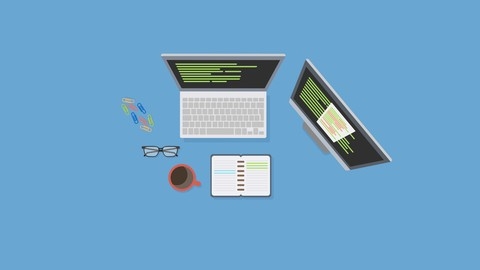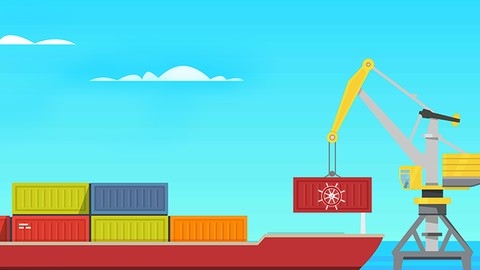Kubernetes is an open-source container orchestration system that automates the deployment, scaling, and management of containerized applications.
It has become a critical technology in modern software development, enabling organizations to deploy and manage applications more efficiently and reliably at scale.
Learning Kubernetes empowers you to build robust and scalable applications, improve developer productivity, and streamline operations.
Finding the right Kubernetes course on Udemy can be a daunting task, given the plethora of options available.
You’re searching for a course that’s comprehensive, engaging, and taught by experts, but also caters to your learning style and goals.
For the best Kubernetes course overall on Udemy, we recommend Kubernetes for the Absolute Beginners - Hands-on.
This course provides a strong foundation in Kubernetes fundamentals, covering core concepts like pods, deployments, services, and namespaces.
It excels in its practical, hands-on approach, providing numerous real-world examples and exercises to solidify your understanding.
The instructor delivers clear explanations and ensures a smooth learning experience.
While this course stands out as the best overall, other excellent options exist.
Keep reading to explore our recommendations for different learning levels, specific topics like CKA/CKAD certifications, and various use cases, such as microservices deployment and cloud platforms.
Kubernetes for the Absolute Beginners - Hands-on
The course starts by introducing you to containers and the need for container orchestration, explaining Kubernetes architecture in a beginner-friendly way.
From there, you’ll dive into core Kubernetes concepts like pods, replica sets, and deployments, learning how to define them using YAML files.
The course provides plenty of coding exercises and quizzes to reinforce your understanding.
You’ll even get tips on using Visual Studio Code for developing Kubernetes manifests.
As you progress, you’ll learn about networking in Kubernetes, different service types like NodePort, ClusterIP, and Load Balancer services.
The course covers deploying a microservices application on Kubernetes using deployments.
It also touches on running Kubernetes on cloud platforms like Google Kubernetes Engine (GKE), Amazon Elastic Kubernetes Service (EKS), and Azure Kubernetes Service (AKS).
You’ll find references to set up a multi-node Kubernetes cluster using kubeadm on VirtualBox.
Certified Kubernetes Administrator (CKA) with Practice Tests
The course starts with an introduction to Kubernetes core concepts like cluster architecture, key components like etcd, API server, controller manager, scheduler, kubelet, and proxy.
You’ll learn about pods, replicasets, deployments, services, and namespaces through hands-on practice tests.
The scheduling section covers manual scheduling, labels, selectors, taints, tolerations, node affinity, resource requirements, daemonsets, static pods, and multiple schedulers.
Next, you’ll dive into logging and monitoring cluster components and applications.
The application lifecycle management module teaches rolling updates, rollbacks, configuring applications via commands, arguments, environment variables, configmaps, and secrets.
You’ll also learn about scaling apps, multi-container pods, and initcontainers.
The cluster maintenance section covers OS upgrades, Kubernetes version upgrades, and backup/restore methods.
Security is a crucial topic, covering authentication, TLS, certificates, kubeconfig, RBAC, cluster roles, service accounts, image security, security contexts, and network policies.
Storage concepts like volumes, persistent volumes, persistent volume claims, and storage classes are explained in-depth.
For networking, you’ll learn about CNI, cluster networking, service networking, DNS, CoreDNS, and ingress.
The course even touches on designing and installing a Kubernetes cluster, including high availability setup using kubeadm.
Troubleshooting techniques for applications, control plane, worker nodes, and networking issues are covered.
Other advanced topics like JSON PATH, advanced kubectl commands, and lightning labs provide further practice.
Multiple mock exams help reinforce the concepts before the Certified Kubernetes Administrator exam.
The course wraps up with FAQs and exam tips.
Docker Mastery: with Kubernetes +Swarm from a Docker Captain
The course starts by introducing you to Docker, explaining its three major innovations and why it’s become so popular.
You’ll learn how to set up Docker on various operating systems, including Windows, macOS, and Linux.
From there, you’ll dive into creating and managing containers, understanding the differences between containers and virtual machines, and working with container images and registries.
As you progress, you’ll explore persistent data management with volumes and bind mounts, making it easier to work with databases and code editing within containers.
The course then covers Docker Compose, a tool for defining and running multi-container applications with a single configuration file.
Moving on, you’ll learn about Docker Swarm, Docker’s built-in orchestration solution.
You’ll create a Swarm cluster, deploy services across multiple nodes, and manage application lifecycles with features like rolling updates and health checks.
The course then shifts gears to Kubernetes, introducing you to its architecture, terminology, and installation process.
You’ll learn how to create and manage Pods, Deployments, and Services, as well as inspect and expose Kubernetes resources.
The course covers advanced topics like declarative management with YAML files, labels and selectors, storage options, and ingress controllers.
Throughout the course, you’ll work on hands-on assignments and quizzes to reinforce your learning.
You’ll also learn about automation with tools like GitHub Actions, Docker security best practices, and the latest Docker features.
Docker and Kubernetes: The Complete Guide
The course begins by diving deep into Docker, exploring its purpose, architecture, and core concepts like images and containers.
You’ll learn how to build custom Docker images, manage containers, and even create multi-container applications using Docker Compose.
The hands-on approach, with practical examples like building a simple Node.js web app, solidifies your understanding.
As you progress, the course seamlessly introduces Kubernetes, explaining its advantages over Docker Compose for scaling and orchestrating containers across multiple nodes.
You’ll grasp key Kubernetes concepts such as pods, deployments, services, and ingress controllers through clear explanations and real-world examples.
One of the course’s strengths is its focus on real-world development workflows.
You’ll learn to integrate Kubernetes with GitHub for version control, Travis CI for continuous integration and deployment, and cloud providers like Google Cloud and AWS.
The instructor guides you through setting up a complete CI/CD pipeline, ensuring you gain practical experience with industry-standard tools and practices.
It dives into advanced topics like managing persistent storage with volumes, securing applications with HTTPS using Let’s Encrypt, and streamlining local development with Skaffold.
You’ll also learn how to handle multi-container deployments, environment variables, and secrets management within Kubernetes clusters.
Throughout the course, the instructor maintains a conversational tone, explaining complex concepts in simple language and providing clear demonstrations.
The course material flows naturally, taking you on a logical journey from Docker basics to deploying production-ready applications on Kubernetes clusters.
Kubernetes Certified Application Developer (CKAD) with Tests
The course starts with an introduction to Kubernetes and its architecture, followed by core concepts like pods, ReplicaSets, Deployments, and Namespaces.
You’ll dive into configuration aspects such as defining and modifying container images, handling commands and arguments, environment variables, ConfigMaps, and Secrets.
The course also covers crucial areas like multi-container pods, init containers, observability (readiness/liveness probes, logging, monitoring), and pod design (labels, annotations, rolling updates/rollbacks, deployment strategies).
Networking concepts like Services (ClusterIP), Ingress, and Network Policies are explained in detail.
You’ll learn about state persistence using volumes, persistent volumes, persistent volume claims, storage classes, and StatefulSets.
The security section covers authentication, authorization, admission control, RBAC, cluster roles, API groups, and custom resource definitions.
Additionally, the course introduces you to Helm for package management and provides practice opportunities through Kubernetes challenges and lightning labs.
Mock exams are included to simulate the real certification experience.
Docker & Kubernetes: The Practical Guide [2024 Edition]
The course starts by covering Docker fundamentals - images, containers, volumes, networking, and multi-container applications.
You’ll learn to build, run, and manage Docker containers for development.
The course then dives into Kubernetes concepts like nodes, pods, deployments, and services.
You’ll use Kubernetes to create resources declaratively, manage data volumes, handle networking between pods, and deploy to cloud providers like AWS EKS.
Interestingly, it covers using Kubernetes for utility containers beyond just applications.
A major project walks you through Dockerizing a full-stack app with a React frontend, Node.js backend, and MongoDB database.
You’ll leverage Docker Compose for orchestration.
For deployment, it guides you in pushing images to the cloud and managing deployments on AWS EC2 instances and the EKS managed Kubernetes service.
The syllabus covers key Docker commands, local vs remote environments, and using volumes for data persistence.
For Kubernetes, it explains core resources like deployments, services, storage volumes, and networking approaches like environment variables and DNS.
Practical examples reinforce the concepts.
DevOps Project 1 - CI/CD with Git Jenkins Ansible Kubernetes
The course starts with an introduction to CI/CD (Continuous Integration/Continuous Deployment) concepts and the resources needed to set up the DevOps pipeline.
You’ll learn how to quickly get up to speed with the necessary tools and technologies.
The first major section dives into setting up a CI/CD pipeline using Git for version control, Jenkins for automation, and Maven for building Java projects.
You’ll install Jenkins, integrate it with Git to pull code from GitHub, and use Maven to build your Java application.
This section covers troubleshooting build failures and automating the entire process.
Next, you’ll integrate a Tomcat server into the pipeline, allowing you to deploy your built artifacts.
You’ll learn how to set up a Tomcat server, integrate it with Jenkins, and automate the deployment process using features like “Poll SCM.”
The course then shifts gears to Docker, teaching you how to set up a Docker environment, create custom Dockerfiles for Tomcat, and integrate Docker with Jenkins.
You’ll build Docker images, copy artifacts onto the Docker host, and automate the entire build and deployment process on Docker containers.
Ansible is introduced to simplify the management of Docker containers.
You’ll install Ansible, integrate it with Docker and Jenkins, and use Ansible playbooks to create images, containers, and copy images to Docker Hub.
The course covers continuous deployment of Docker containers using Ansible playbooks and Jenkins CI/CD pipelines.
Kubernetes is the next major topic, covering its advantages and installation methods, including setting up EKS (Elastic Kubernetes Service) on AWS.
You’ll learn to run basic Kubernetes commands, create manifest files for deployments and services, and use labels and selectors.
The course then integrates Kubernetes into the CI/CD pipeline.
You’ll write deployment files, create Ansible playbooks for deployments and services, and set up Jenkins jobs for Kubernetes deployments.
Rolling updates are covered to create pods from the latest Docker images, enabling a complete CI/CD pipeline to build and deploy code on Kubernetes clusters.
Throughout the course, you’ll work with hands-on examples, real-world scenarios, and best practices for setting up a robust DevOps CI/CD pipeline using industry-standard tools.
Learn DevOps: The Complete Kubernetes Course
The course starts by introducing you to Kubernetes and containers, guiding you through setting up a local Kubernetes environment using tools like Minikube or the Docker client.
You’ll learn how to build and push Docker images to a registry, then run your first application on Kubernetes.
The course dives into core Kubernetes concepts like Deployments, Services, Labels, and health checks.
You’ll understand how to manage application credentials securely using Secrets and ConfigMaps.
As you progress, you’ll explore advanced topics like Service Discovery, Ingress Controllers, Volumes for stateful apps, auto-provisioning volumes, and StatefulSets for running distributed databases.
Monitoring and auto-scaling are covered, teaching you to set up monitoring with Metrics Server (the newer alternative to Heapster) and enable horizontal auto-scaling based on metrics.
You’ll learn about affinities/anti-affinities for scheduling constraints and taints/tolerations.
The course even touches on extending Kubernetes via Custom Resource Definitions and Operators.
For administration, you’ll learn about master services, resource quotas across namespaces, RBAC for authorization, networking models like CNI, node maintenance, and achieving high availability.
There are demos on using admission controllers, MutatingWebhooks/ValidatingWebhooks, and Pod Security Policies.
You’ll get insights into etcd, the Kubernetes backing store, and the Raft consensus algorithm it uses.
The later sections cover packaging apps via Helm, continuous deployment with Skaffold and GitOps using Flux.
You’ll explore serverless on Kubernetes with Kubeless and managing microservices using Istio.
Finally, the course guides you through installing Kubernetes clusters using kubeadm on DigitalOcean or EKS on AWS, including IAM Roles for ServiceAccounts on EKS.
Learn DevOps: Docker, Kubernetes, Terraform and Azure DevOps
You’ll start by mastering Docker and containerization, a crucial skill for working with Kubernetes.
The course guides you through building Docker images for Python, Node.js, and Java applications, pushing them to Docker Hub, and running microservices with Docker Compose.
Next, you’ll dive into Kubernetes itself, provisioning clusters on Google Kubernetes Engine (GKE) and Amazon Elastic Kubernetes Service (EKS).
You’ll deploy your first container to a Kubernetes cluster, grasping core concepts like Pods, ReplicaSets, Deployments, and Services.
The course covers generating Kubernetes YAML configuration, using labels and selectors, and configuring multiple deployments with one service.
For microservices, you’ll learn service discovery via environment variables and DNS, centralized configuration with ConfigMaps, and simplifying access with Ingress.
Infrastructure as Code (IaC) is another major focus, with hands-on experience using Terraform to provision AWS resources like S3 buckets, IAM users, EC2 instances, and load balancers.
You’ll store Terraform state remotely, use workspaces and modules for multiple environments, and integrate Terraform with Azure DevOps for automated Kubernetes cluster provisioning.
The course extensively covers CI/CD pipelines in Azure DevOps, from creating your first pipeline to using stages, variables, artifacts, deployment jobs, approvals, and releases.
You’ll build and push Docker images directly from Azure DevOps pipelines and deploy to AKS and EKS clusters provisioned with Terraform.
Other key topics include Azure DevOps boards/backlogs, Jenkins pipelines for CI, and configuration management with Ansible for automating app deployment.
You’ll get exposure to Visual Studio Code, microservices architecture, AWS/Azure cloud onboarding, and overarching DevOps best practices.
Kubernetes Hands-On - Deploy Microservices to the AWS Cloud
You’ll start by learning the fundamentals of Kubernetes, including pods, services, and deployments.
The course guides you through installing a local Kubernetes environment for development, making it easy to follow along with hands-on exercises.
Once you’ve grasped the basics, you’ll dive into deploying microservices to Kubernetes.
The course uses a real-world example called “Fleetman” to illustrate how to break down an application into microservices and deploy them to a Kubernetes cluster.
You’ll learn about networking, service discovery, and how to access services like MySQL from within a pod.
The course doesn’t stop there.
It covers crucial topics like persistence and volumes, allowing you to store data persistently within your Kubernetes cluster.
You’ll also learn how to run Kubernetes on the AWS cloud using either EKS (Elastic Kubernetes Service) or Kops (Kubernetes Operations).
The instructor provides detailed guidance on setting up and managing a cluster in the cloud, including pricing differences between EKS and Kops.
As you progress, you’ll explore advanced concepts like requests and limits, horizontal pod autoscaling, readiness and liveness probes, quality of service (QoS), and eviction.
The course also covers ConfigMaps and Secrets, which are essential for managing configuration data and sensitive information within your Kubernetes environment.
Additionally, you’ll learn about Ingress controllers, which enable you to route traffic to your services based on rules you define.
The course covers other workload types like batch jobs, cron jobs, DaemonSets, and StatefulSets, giving you a comprehensive understanding of Kubernetes’ capabilities.
Continuous deployment on a Kubernetes cluster is also covered, with guidance on setting up a CI/CD pipeline using tools like Jenkins and GitHub.
You’ll learn how to automate the deployment process, ensuring seamless updates to your Kubernetes applications.
The course introduces Helm, a package manager for Kubernetes, which simplifies the installation and management of applications within your cluster.
You’ll learn how to find, install, and customize Helm charts, as well as how to write your own charts using Go templates.
Throughout the course, the instructor provides support for Apple M1 and M2 users, ensuring that the content is accessible to a wide range of learners.
Also check our posts on:
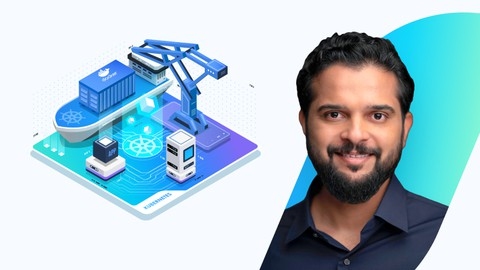

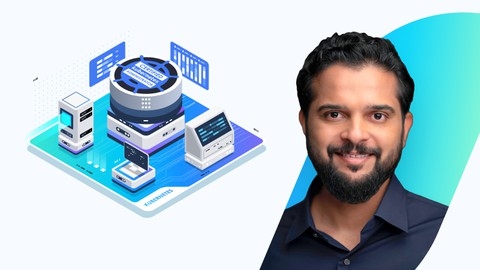
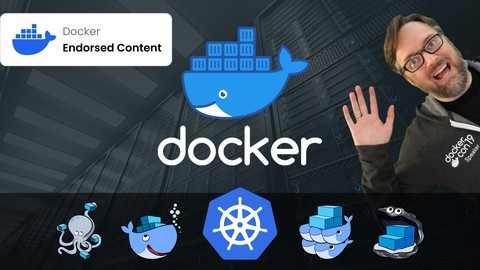


![Docker & Kubernetes: The Practical Guide [2024 Edition]](/img/best-kubernetes-courses-udemy/3490000_DockerKubernetesThePracticalGuide2024Edition.jpg)

